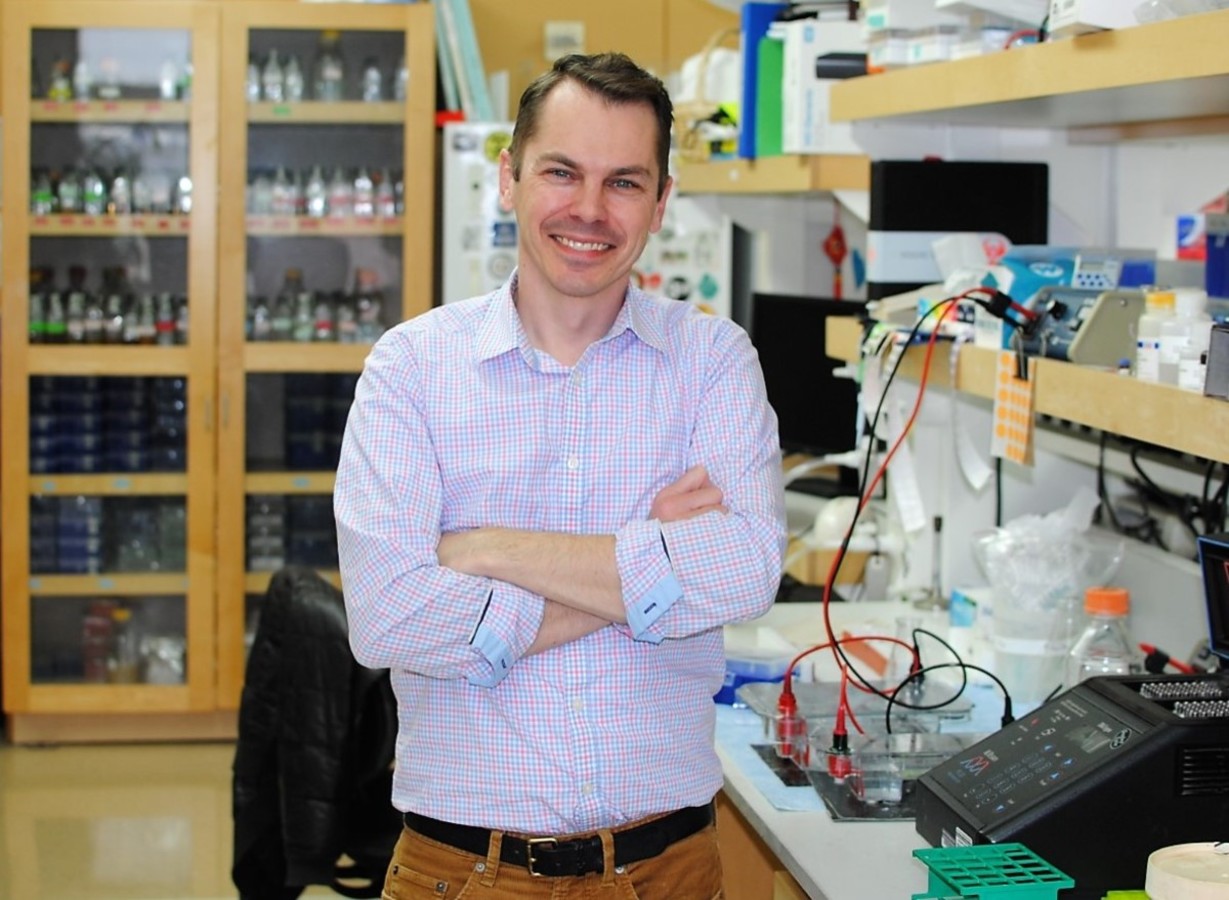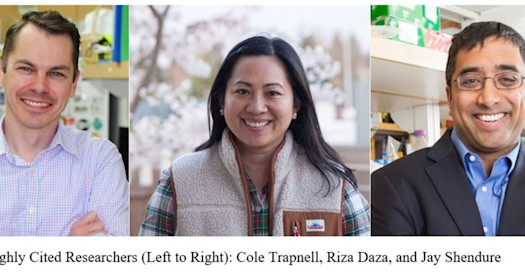 Dr. Cole Trapnell: 'We are developing important varying technologies and seeing the impact of those technologies all the way to the bedside.'
Dr. Cole Trapnell: 'We are developing important varying technologies and seeing the impact of those technologies all the way to the bedside.'
[BACKGROUND: The UW Center for the Multiplex Assessment of Phenotype (CMAP) is one of 13 Centers of Excellence and Genome Science funded by the National Human Genome Research Institute. Each year, principal investigators, researchers, and staff from each center convene to discuss their work. The 2023 meeting, held in New York in October, included 11 members from CMAP: Co-PIs Drs. Douglas Fowler, Fritz Roth, Lea Starita, Nasa Sinnott-Armstrong and Cole Trapnell; project manager Lara Muffley; and CMAP-funded early career scientists Yash Ashok, Atina Coté , Shawn Fayer, Curran Oi and Sriram Pendyala. BBI’s Dr. Cole Trapnell reflects on why this meeting was so important and speaks to the value of insights based on spontaneous conversations with colleagues.]
Why was this meeting so important?
This is a convening of centers of excellence in genome sciences sponsored by the National Human Genome Research Institute. Principle investigators and other scientists working in the centers come together to share and show off their latest results. In my opinion, many of these centers are at the frontier of genome technology development. It’s a great chance to learn what’s happening at the cutting edge of something you’re not working on – a great way to stay current.
What did you seek to achieve at the meeting?
We wanted to communicate the impact of our work – led by Doug Fowler and Lea Starita – regarding both within our center, as well as our community and field outreach. In terms of developing new technologies for understanding the functional impact of human genetic variation, our center’s work is cutting-edge. We are developing important varying technologies and seeing the impact of those technologies all the way to the bedside. It’s been quite successful and we did not want that success to be lost on anyone at the meeting.
What was surprising or unexpected?
The wonderful things about working in technology development is that it’s a very fast-paces field. For example, I knew that a colleague, Britt Adamson at a different center at Princeton, is working on a better way of putting genetic variants into specific genes in the genome. Her applications are very different than ours. I had a nearly hour-long conversation with her about how we might use her tools to understand developmental biology in zebrafish. And maybe use those tools to model genetic disease. It was not on my agenda to speak with her, but it was an example of the wonderful, engaging, and spontaneous conversations that happen when you put a bunch of people working on a bunch of exciting things in the same room.
What new information or insights did you glean and how will you incorporate those into your work?
That chance encounter with Britt is one example. Another example – and this is a crown jewel of our center – is the outreach effort that our colleague Lara Muffley has led. She and others, such as Alan Rubin, and have invested enormous amounts of time in building a community of users around our new technologies. This not something we in academia are incentivized to do. Usually, we do research, get that research published in peer-reviewed journals, then move on to the next research project. This democratizing of technology with our stakeholders is something on which our center has done an absolutely terrific job. I have not been involved in those efforts until now, and it was evident to me that the strategies Lara, Doug, and Alan have employed are exceptional.


